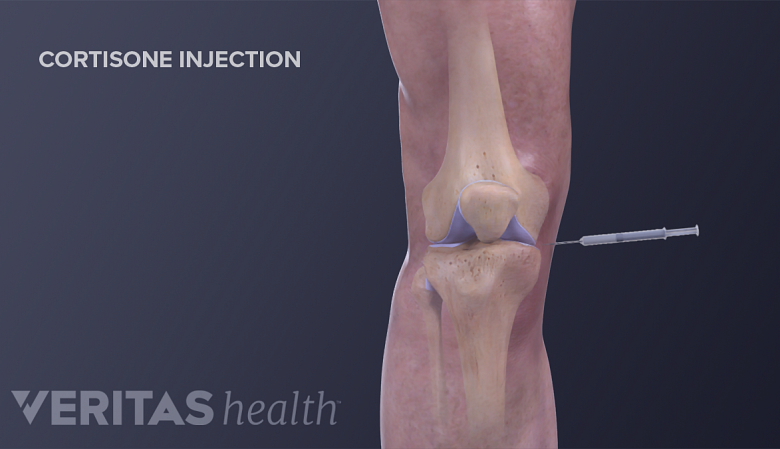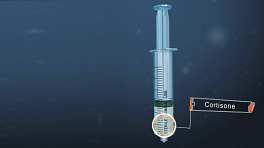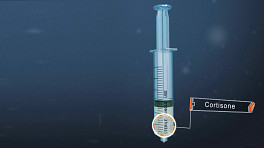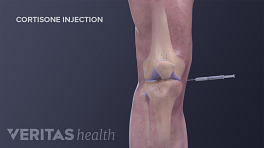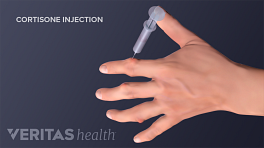We spoke with orthopedic surgeon Dr. Emmanuel Konstantakos about cortisone injections and their role in treating joint pain, including but not limited to arthritis pain. Dr. Konstantakos explains the risks and benefits associated with this treatment.
1. Cortisone injections are commonly used to treat joint pain, but some people are leery of getting them. Why do you think that is?
Cortisone is a powerful steroid that reduces inflammation, and it can be a lifesaver for some people experiencing inflammatory joint pain. It has a mixed reputation, I think, for a couple of reasons.
See Cortisone Injections (Steroid Injections)
First, some people experience a “cortisone flare” after getting an injection, and this flare can be more painful than the condition being treated. The flare is temporary—it may last anywhere from a few hours or a couple of days—and the injection may still be effective over time, but that initial pain can be surprising and stressful.
Second, a growing body of evidence suggests cortisone may weaken a joint’s soft tissues, such as tendons and cartilage. 1 Dragoo JL. Chondrotoxicity of commonly used single injection corticosteroids. Presented at the 2010 Annual Meeting of the American Orthopaedic Society for Sports Medicine. July 15-18. Providence, R.I. Cited by Orthopedics Today. Preservative noted as possible key to intra-articular injection corticosteroid chondrotoxicity. Helio Orthopedics. www.healio.com. Published September 2010. Accessed February 18, 2014. , 2 Papacrhistou G, Anagnostou S, Katsorhis T. The effect of intraarticular hydrocortisone injection on the articular cartilage of rabbits. Acta Orthop Scand Suppl. 1997 Oct;275:132-4. PubMed PMID: 9385288. , 3 McAlindon TE, LaValley MP, Harvey WF, et al. Effect of Intra-articular Triamcinolone vs Saline on Knee Cartilage Volume and Pain in Patients With Knee Osteoarthritis: A Randomized Clinical Trial. JAMA. 2017;317(19):1967–1975. doi:10.1001/jama.2017.5283 This means that injections should never be made directly into a tendon, even if the tendon is what’s being treated. It also means people who get repeated cortisone injections risk tendon degeneration, called tendinosis or tendinopathy. That’s why physicians space injections several weeks apart. 4 Cardone DA, Tallia AF. Joint and soft tissue injection. Am Fam Physician. 2002 Jul 15;66(2):283-8. PubMed PMID: 12152964. In fact, I prefer to space them at least 3 to 4 months apart. We also limit the number of injections a patient can get in one joint to 3 or 4 per year.
2. Why are tendons especially at risk?
A person may get a cortisone shot and feel great, but the affected tendon is weakened, so when they go work out they may unwittingly injure the tendon and make things worse. We sometimes prescribe physical therapy after a cortisone shot, because a physical therapist can make sure you’re strengthening the joint without risking injury to it.
Essentially, cortisone is a valuable tool for physicians, but it must be used judiciously and patients must be informed about caveats and potential risks.
3. Who is a good candidate for cortisone injections?
The people who benefit from cortisone shots usually have one joint that is painful and inflamed and making life miserable. This type of isolated joint pain can be caused by bursitis, osteoarthritis, gout, pseudogout, and other conditions.
For these patients, the cortisone injection gets the inflammation under control. Then we can work together to treat the underlying problem.
4. When are other types of injections appropriate?
Whether another type of injection is appropriate depends on the patient and the underlying condition being treated. If osteoarthritis is being treated—particularly in the knee or hip--a hyaluronic acid injection might be recommended. Hyaluronic acid is a thick, slippery liquid that may reduce pain by lubricating the joint.
Other types of injections, such as Platelet-Rich Plasma (PRP) Therapy for Arthritis and stem cell injections, are less well researched and still considered controversial. A physician may suggest PRP or stem cells for osteoarthritis, tendonitis, or other joint problems.
Every patient is unique and the choices we make regarding treatments must be tailored to his or her circumstances. Ultimately, it’s important to remember that cortisone shots are not a long-term solution for treating pain. They are a way to temporarily relieve inflammatory pain and potentially buy time while the joint heals.
Learn more:
- 1 Dragoo JL. Chondrotoxicity of commonly used single injection corticosteroids. Presented at the 2010 Annual Meeting of the American Orthopaedic Society for Sports Medicine. July 15-18. Providence, R.I. Cited by Orthopedics Today. Preservative noted as possible key to intra-articular injection corticosteroid chondrotoxicity. Helio Orthopedics. www.healio.com. Published September 2010. Accessed February 18, 2014.
- 2 Papacrhistou G, Anagnostou S, Katsorhis T. The effect of intraarticular hydrocortisone injection on the articular cartilage of rabbits. Acta Orthop Scand Suppl. 1997 Oct;275:132-4. PubMed PMID: 9385288.
- 3 McAlindon TE, LaValley MP, Harvey WF, et al. Effect of Intra-articular Triamcinolone vs Saline on Knee Cartilage Volume and Pain in Patients With Knee Osteoarthritis: A Randomized Clinical Trial. JAMA. 2017;317(19):1967–1975. doi:10.1001/jama.2017.5283
- 4 Cardone DA, Tallia AF. Joint and soft tissue injection. Am Fam Physician. 2002 Jul 15;66(2):283-8. PubMed PMID: 12152964.
